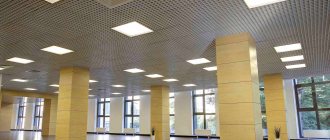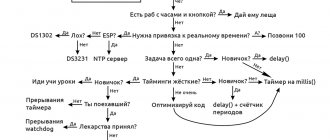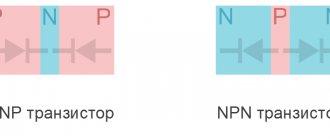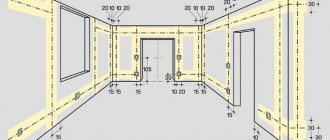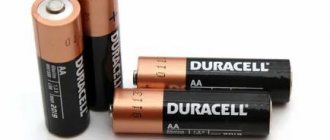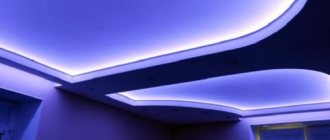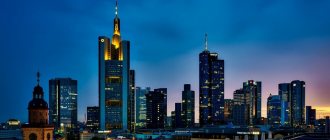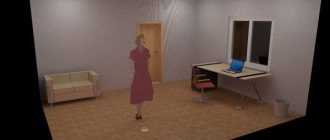To supplement and replace natural light at night, there is a need for artificial lighting. High-quality artificial lighting ensures safety on the streets and roads of urban and rural settlements, reduces the number of accidents on highways and pedestrian crossings at night, and also helps prevent criminal acts.
Illumination standards are generally accepted and regulated by SNiP document 05/23/2010, including SP 52.13330.2011.
These documents regulate lighting requirements for the following objects:
• Lighting standards for streets and roads in urban settlements
• Lighting standards for streets and roads in rural settlements
• Illumination standards for underground and overground passages
• lighting standards for gas stations and parking lots
• Lighting standards for pedestrian spaces
Street lighting standards depend on the type of streets and roads, as well as on the functional features of the illuminated objects.
One of the main standardized indicators is the average horizontal illumination at ground or road surface level. The tables below show some values of the standards, according to SP 52.13330.2011.
Tables of street and road lighting standards
Roads and streets within the boundaries of settlements
The values are given based on SP 52.13330.2016 “Natural and artificial lighting”.
Road class A1
Main roads and city streets outside the city center, transport and functional axes, exits to external federal highways. Used by all types of transport moving continuously and at high speed. Multi-level intersections and a central dividing strip are used.
| Design speed, km/h | 100 | Number of lanes in both directions | 6 — 8 | Throughput, thousand units/day | Over 10.0 |
Table of lighting standards “Road class A1”
| Average brightness of the road surface Laver, cd/m2, not less | 2,00 |
| General uniformity of road surface brightness U0, not less | 0,40 |
| Longitudinal uniformity of road surface brightness Ui, not less | 0,70 |
| Threshold brightness increment TI, %, no more | 10 |
| Average illumination of the road surface Eср, lux, not less | 30 |
| Uniformity of illumination of the road surface Uh, not less | 0,35 |
| Maximum relative specific power at normalized illumination, Dp, mW*m-2*lx-1, no more | 60 |
Look at the ready-made solution “Class A1 Road Lighting”
Road class A2
Main roads and city streets outside the city center, main transport channels, including those with access to external highways and expressways. Used by all types of transport. Movement is both continuous and controlled. The intersection with highways can be single- or multi-level.
| Design speed, km/h | 80 — 100 | Number of lanes in both directions | 6 — 8 | Throughput, thousand units/day | 7,0 — 9,0 |
Table of lighting standards “Road class A2”
| Average brightness of the road surface Laver, cd/m2, not less | 1,60 |
| General uniformity of road surface brightness U0, not less | 0,40 |
| Longitudinal uniformity of road surface brightness Ui, not less | 0,70 |
| Threshold brightness increment TI, %, no more | 10 |
| Average illumination of the road surface Eср, lux, not less | 20 |
| Uniformity of illumination of the road surface Uh, not less | 0,35 |
| Maximum relative specific power at normalized illumination, Dp, mW*m-2*lx-1, no more | 50 |
Look at the ready-made solution “Class A2 Road Lighting”
Road class A3
Main roads and streets of citywide importance in the central part of the city, transport axes of its historical center, connecting streets with access to highways of classes A1 and A2. Used by all types of transport with the exception of transit freight. The traffic is regulated, the intersections with highways are on the same level, there are numerous pedestrians.
| Design speed, km/h | 90 | Number of lanes in both directions | 6 — 8 | Throughput, thousand units/day | 4,0 — 7,0 |
Table of lighting standards “Road class A3”
| Average brightness of the road surface Laver, cd/m2, not less | 1,40 |
| General uniformity of road surface brightness U0, not less | 0,40 |
| Longitudinal uniformity of road surface brightness Ui, not less | 0,70 |
| Threshold brightness increment TI, %, no more | 12 |
| Average illumination of the road surface Eср, lux, not less | 20 |
| Uniformity of illumination of the road surface Uh, not less | 0,35 |
| Maximum relative specific power at normalized illumination, Dp, mW*m-2*lx-1, no more | 48 |
Look at the ready-made solution “Lighting of Class A3 roads”
Road class A4
Main roads and streets of citywide importance in the central part of the city, its main transport channels. They provide internal connections and have access to main streets of citywide and regional significance. Used by all types of transport with the exception of transit freight. The traffic is regulated, the intersections with highways are on the same level, there are numerous pedestrians.
| Design speed, km/h | 80 | Number of lanes in both directions | 4 — 6 | Throughput, thousand units/day | 3,0 — 5,0 |
Table of lighting standards “Road class A4”
| Average brightness of the road surface Laver, cd/m2, not less | 1,20 |
| General uniformity of road surface brightness U0, not less | 0,40 |
| Longitudinal uniformity of road surface brightness Ui, not less | 0,70 |
| Threshold brightness increment TI, %, no more | 12 |
| Average illumination of the road surface Eср, lux, not less | 20 |
| Uniformity of illumination of the road surface Uh, not less | 0,35 |
| Maximum relative specific power at normalized illumination, Dp, mW*m-2*lx-1, no more | 45 |
Look at the ready-made solution “A4 class road lighting”
Road class B1
Highways and district streets outside the city center. Provide connections within residential areas and industrial areas, as well as between them. Used by all types of transport, traffic is regulated, single-level intersections.
| Design speed, km/h | 60 — 70 | Number of lanes in both directions | 4 — 6 | Throughput, thousand units/day | 3,0 — 5,0 |
Table of lighting standards “Road class B1”
| Average brightness of the road surface Laver, cd/m2, not less | 1,20 |
| General uniformity of road surface brightness U0, not less | 0,40 |
| Longitudinal uniformity of road surface brightness Ui, not less | 0,60 |
| Threshold brightness increment TI, %, no more | 12 |
| Average illumination of the road surface Eср, lux, not less | 20 |
| Uniformity of illumination of the road surface Uh, not less | 0,35 |
| Maximum relative specific power at normalized illumination, Dp, mW*m-2*lx-1, no more | 45 |
Look at the ready-made solution “Class B1 Road Lighting”
Road class B2
Highways and streets of regional significance in the city center, axes of functional and planning zones of the historical part. They provide internal communications and have access to main streets of city and regional significance. Used by all types of transport except transit freight, traffic is regulated, single-level intersections.
| Design speed, km/h | 60 | Number of lanes in both directions | 3 — 6 | Throughput, thousand units/day | 2,0 — 5,0 |
Table of lighting standards “Road class B2”
| Average brightness of the road surface Laver, cd/m2, not less | 1,00 |
| General uniformity of road surface brightness U0, not less | 0,40 |
| Longitudinal uniformity of road surface brightness Ui, not less | 0,60 |
| Threshold brightness increment TI, %, no more | 15 |
| Average illumination of the road surface Eср, lux, not less | 15 |
| Uniformity of illumination of the road surface Uh, not less | 0,35 |
| Maximum relative specific power at normalized illumination, Dp, mW*m-2*lx-1, no more | 53 |
Look at the ready-made solution “Class B2 Road Lighting”
Road class B1
Streets and roads of local importance in residential areas outside the city center, transport and pedestrian connections within areas with access to highways, with the exception of streets with continuous traffic. Passenger, special and cargo transport (except for transit), sometimes public passenger transport. The traffic is regulated, the intersections are one-level.
| Design speed, km/h | 60 | Number of lanes in both directions | 2 — 4 | Throughput, thousand units/day | 1,5 — 3,0 |
Table of lighting standards “Road class B1”
| Average brightness of the road surface Laver, cd/m2, not less | 0,80 |
| General uniformity of road surface brightness U0, not less | 0,40 |
| Longitudinal uniformity of road surface brightness Ui, not less | 0,50 |
| Threshold brightness increment TI, %, no more | 15 |
| Average illumination of the road surface Eср, lux, not less | 15 |
| Uniformity of illumination of the road surface Uh, not less | 0,25 |
| Maximum relative specific power at normalized illumination, Dp, mW*m-2*lx-1, no more | 50 |
Look at the ready-made solution “Class B1 road lighting”
Road class B2
Streets and roads of local importance in residential areas of the city center. They provide transport and pedestrian connections within the microdistricts and have access to the main streets of the center. There are passenger, special and cargo vehicles (with the exception of transit). The movement is regulated with intersections at the same level.
| Design speed, km/h | 60 | Number of lanes in both directions | 2 — 4 | Throughput, thousand units/day | 1,5 — 3,0 |
Table of lighting standards “Road class B2”
| Average brightness of the road surface Laver, cd/m2, not less | 0,60 |
| General uniformity of road surface brightness U0, not less | 0,40 |
| Longitudinal uniformity of road surface brightness Ui, not less | 0,50 |
| Threshold brightness increment TI, %, no more | 15 |
| Average illumination of the road surface Eср, lux, not less | 10 |
| Uniformity of illumination of the road surface Uh, not less | 0,25 |
| Maximum relative specific power at normalized illumination, Dp, mW*m-2*lx-1, no more | 50 |
Look at the ready-made solution “Class B2 road lighting”
Road class B3
Streets and roads of local importance in urban, industrial, municipal and warehouse areas, transport links within these areas. Used by all types of transport. The traffic is regulated, all intersections are one-level.
| Design speed, km/h | 60 | Number of lanes in both directions | 2 — 4 | Throughput, thousand units/day | 0,5 — 2,0 |
Table of lighting standards “Road class B3”
| Average brightness of the road surface Laver, cd/m2, not less | 0,40 |
| General uniformity of road surface brightness U0, not less | 0,35 |
| Longitudinal uniformity of road surface brightness Ui, not less | 0,40 |
| Threshold brightness increment TI, %, no more | 20 |
| Average illumination of the road surface Eср, lux, not less | 6 |
| Uniformity of illumination of the road surface Uh, not less | 0,25 |
| Maximum relative specific power at normalized illumination, Dp, mW*m-2*lx-1, no more | 50 |
Look at the ready-made solution “Class B3 road lighting”
Public roads outside settlements
The values are given based on GOST R 58107.1-2018, the calculated values of throughput, traffic speed and number of lanes are based on SP 34.13330.2012.
Road category IA
Highways designed for the safe and uninterrupted movement of high-intensity traffic flows at high speeds. It is necessary to have a dividing strip or place each direction of movement on a separate road surface. Access for pedestrians and cyclists is prohibited, there are no single-level intersections, and the number of junctions (both single- and two-level) is limited.
| Design speed, km/h | 120 — 150 | Number of lanes in both directions | 4 — 8 | Throughput, thousand units/day | Over 14.0 |
Table of lighting standards “Road category IA”
| Average brightness of the road surface Laver, cd/m2, not less | 1,60 |
| General uniformity of road surface brightness U0, not less | 0,40 |
| Longitudinal uniformity of road surface brightness Ui, not less | 0,70 |
| Threshold brightness increment TI, %, no more | 10 |
| Average illumination of the road surface Eср, lux, not less | 20 |
| Uniformity of illumination of the road surface Uh, not less | 0,35 |
| Peripheral illumination coefficient SR, not less | 0,35 |
| Maximum relative specific power at normalized illumination, Dp, mW*m-2*lx-1, no more | 50 |
Road category IB
This includes roads for high-speed traffic with a mandatory median strip. Same-level intersections are not allowed, and junctions at the same level are allowed only without crossing the direct direction of movement.
| Design speed, km/h | 100 — 120 | Number of lanes in both directions | 4 — 8 | Throughput, thousand units/day | Over 14.0 |
Table of lighting standards “Road category IB”
| Average brightness of the road surface Laver, cd/m2, not less | 1,20 |
| General uniformity of road surface brightness U0, not less | 0,40 |
| Longitudinal uniformity of road surface brightness Ui, not less | 0,70 |
| Threshold brightness increment TI, %, no more | 10 |
| Average illumination of the road surface Eср, lux, not less | 15 |
| Uniformity of illumination of the road surface Uh, not less | 0,35 |
| Peripheral illumination coefficient SR, not less | 0,35 |
| Maximum relative specific power at normalized illumination, Dp, mW*m-2*lx-1, no more | 50 |
Road category IB
Regular roads with medium traffic intensity, accessible to all types of transport. The presence of a median strip is not a mandatory requirement. Bicycle and pedestrian paths must be additionally separated from the main road.
| Design speed, km/h | 80 — 100 | Number of lanes in both directions | 4 — 8 | Throughput, thousand units/day | Less than 14.0 |
Table of lighting standards “Road category IB”
| Average brightness of the road surface Laver, cd/m2, not less | 1,00 |
| General uniformity of road surface brightness U0, not less | 0,40 |
| Longitudinal uniformity of road surface brightness Ui, not less | 0,60 |
| Threshold brightness increment TI, %, no more | 15 |
| Average illumination of the road surface Eср, lux, not less | 10 |
| Uniformity of illumination of the road surface Uh, not less | 0,25 |
| Peripheral illumination coefficient SR, not less | 0,35 |
| Maximum relative specific power at normalized illumination, Dp, mW*m-2*lx-1, no more | 50 |
Road category II
Ordinary roads designed to carry medium-intensity traffic flows at high speeds. There is no dividing strip; junctions and intersections at the same level are allowed.
| Design speed, km/h | 100 — 120 | Number of lanes in both directions | 2 — 4 | Throughput, thousand units/day | Less than 6.0 |
Table of lighting standards “Road category II”
| Average brightness of the road surface Laver, cd/m2, not less | 1,00 |
| General uniformity of road surface brightness U0, not less | 0,40 |
| Longitudinal uniformity of road surface brightness Ui, not less | 0,60 |
| Threshold brightness increment TI, %, no more | 15 |
| Average illumination of the road surface Eср, lux, not less | 10 |
| Uniformity of illumination of the road surface Uh, not less | 0,25 |
| Peripheral illumination coefficient SR, not less | 0,35 |
| Maximum relative specific power at normalized illumination, Dp, mW*m-2*lx-1, no more | 50 |
Road category III
Ordinary roads for carrying traffic flows with average intensity and above average speed. No dividing strip. Single-level connections and intersections are allowed, including with railway and tram tracks.
| Design speed, km/h | 80 — 100 | Number of lanes in both directions | 2 | Throughput, thousand units/day | 2,0 — 6,0 |
Table of lighting standards “Road category III”
| Average brightness of the road surface Laver, cd/m2, not less | 0,80 |
| General uniformity of road surface brightness U0, not less | 0,40 |
| Longitudinal uniformity of road surface brightness Ui, not less | 0,60 |
| Threshold brightness increment TI, %, no more | 15 |
| Average illumination of the road surface Eср, lux, not less | 8 |
| Uniformity of illumination of the road surface Uh, not less | 0,25 |
| Peripheral illumination coefficient SR, not less | 0,35 |
| Maximum relative specific power at normalized illumination, Dp, mW*m-2*lx-1, no more | 50 |
Road category IV
Ordinary roads for carrying traffic flows with below average intensity. Single-level intersections and junctions with other roads, the organization of bicycle and pedestrian paths without additional measures to organize traffic are allowed.
| Design speed, km/h | 60 — 80 | Number of lanes in both directions | 2 | Throughput, thousand units/day | 0,2 — 2,0 |
Table of lighting standards “Road category IV”
| Average brightness of the road surface Laver, cd/m2, not less | 0,60 |
| General uniformity of road surface brightness U0, not less | 0,35 |
| Longitudinal uniformity of road surface brightness Ui, not less | 0,50 |
| Threshold brightness increment TI, %, no more | 15 |
| Average illumination of the road surface Eср, lux, not less | 8 |
| Uniformity of illumination of the road surface Uh, not less | 0,25 |
| Peripheral illumination coefficient SR, not less | 0,35 |
| Maximum relative specific power at normalized illumination, Dp, mW*m-2*lx-1, no more | 50 |
Road category V
Regular low-capacity roads. Travel speed is low.
| Design speed, km/h | 40 — 60 | Number of lanes in both directions | 2 | Throughput, thousand units/day | Less than 0.2 |
Table of lighting standards “Road category V”
| Average brightness of the road surface Laver, cd/m2, not less | 0,40 |
| General uniformity of road surface brightness U0, not less | 0,35 |
| Longitudinal uniformity of road surface brightness Ui, not less | 0,40 |
| Threshold brightness increment TI, %, no more | 15 |
| Average illumination of the road surface Eср, lux, not less | 8 |
| Uniformity of illumination of the road surface Uh, not less | 0,25 |
| Peripheral illumination coefficient SR, not less | 0,35 |
| Maximum relative specific power at normalized illumination, Dp, mW*m-2*lx-1, no more | 50 |
Concepts and definitions
Peripheral illumination coefficient
The ratio of the average illumination on the surface of the roadside to the average illumination on the surface of the traffic lane adjacent to the shoulder.
Maximum relative specific power at normalized illumination
Serves as an indicator of the energy efficiency of a lighting installation. The determination method is given in “Appendix M” to SP 52.13330.2016. In fact, it shows how many milliwatts of electrical power are spent to create illumination of 1 lux on 1 square meter of area.
General uniformity of road surface brightness
The ratio of the minimum value of road surface brightness to the average.
Threshold brightness increment
An indicator of the glare effect of lamps on the driver of a vehicle. In fact, it is an increase in the contrast between the object of observation and the background, in which the presence of a brilliant light source does not affect the visibility of the object. The formula for determining this value is shown in Figure 3.10 in paragraph 3.61 of SP 52.13330.2016.
Longitudinal uniformity of road surface brightness
The ratio of the minimum value of road surface brightness to its maximum value along the axis of the traffic lane.
Average illumination of the road surface
Illumination on the road surface, weighted average over the area of a given area. Measured in lux.
Average road surface brightness
Brightness dry
road surface in the direction of the eye of an observer located on the axis of the traffic lane under standard conditions.
A weighted average of the roadway area is used. It is measured in candelas per square meter. Standard observation conditions
Conditions under which the observer's eye is at a height of 1.5 meters above the road and is removed from the calculated point at such a distance that the line of sight makes an angle of 0.5 to 1.5 degrees with the road surface.
General information
The data presented here for roads inside settlements is based on SP 52.13330.2016, outside settlements - on GOST R 58107.1-2018. Features of the installation of lighting systems are based on the current edition of the PUE (seventh edition). Most requirements have mandatory
, but only when designing new or reconstructing existing lighting systems. The selection of applied normalized values is based on the categories of objects. Therefore, before looking for the desired value, it is necessary to determine the class or category of the road in accordance with existing documentation. If this is not possible, you can use the simplest indicators as a guide: the number of traffic lanes, the presence or absence of a dividing strip and the approximate throughput.
It should also be taken into account that for roads with non-standard geometry or with a surface other than asphalt concrete (paving stones, cement concrete), as well as for roads located in the northern construction-climatic zone of the Asian part of Russia (see figure), the average brightness, and also, its overall and longitudinal uniformity is not standardized
.
Schematic map of the northern construction-climatic zone
The average brightness or average illumination of the road surface of roads and streets intersecting at the same level must correspond to the values established for the main road or street at a distance of at least 100 m from the junction line. At exits and branches of roads and streets intersecting at different levels, within the boundaries of a traffic intersection, the average illumination value should be at least 20 lux (for similar objects outside settlements - at least 10 lux). The average brightness or average illumination of the road surface of local streets adjacent to a main road or street must be at least 1/3 of the values established for the corresponding road or street, but not lower than the normalized value for a local street at a distance of at least 100 m from connection lines.
With a standardized average brightness of more than 0.80 cd/m² or an average illumination of more than 15 lux for the roadway of city streets, roads and squares, as well as for public roads outside the boundaries of settlements, it is allowed to reduce these standards at night by turning off some of the lamps or reducing their power by 30% and 50%, respectively, when the traffic intensity is reduced to 1/3 and 1/5 of the maximum value, respectively. Partial switching off of lamps at night is not allowed when they are installed one at a time on a support.
Preface
1 DEVELOPED by the Limited Liability Company "All-Russian Research, Design and Engineering Lighting Institute named after S.I. Vavilov" (VNISI LLC)
2 INTRODUCED by the Technical Committee for Standardization TC 332 “Lighting Products”
3 APPROVED AND ENTERED INTO EFFECT by Order of the Federal Agency for Technical Regulation and Metrology dated November 8, 2013 N 1360-st
4 INTRODUCED FOR THE FIRST TIME
5 REPUBLICATION. November 2022
The rules for the application of this standard are established in
Article 26 of the Federal Law of June 29, 2015 N 162-FZ “On standardization in the Russian Federation”
. Information about changes to this standard is published in the annual (as of January 1 of the current year) information index “National Standards”, and the official text of changes and amendments is published in the monthly index “National Standards”. In case of revision (replacement) or cancellation of this standard, the corresponding notice will be published in the next issue of the monthly information index “National Standards”. Relevant information, notices and texts are also posted in the public information system - on the official website of the Federal Agency for Technical Regulation and Metrology on the Internet (www.gost.ru)
Requirements for installation of lamps
As a rule, lamps for lighting roads are installed on lighting poles connected by an overhead power line (OHL). If it is intended to service devices from a telescopic tower, then they are located above the overhead line wires or at the level of the lower overhead line wires. In both cases, the horizontal distance from the lamp to the nearest power line wire must be at least 0.6 m. If the lamps are serviced in a different way, then they are installed below the overhead line. In this case, the distance from the lamp to the nearest wire must be at least 0.2 and 0.4 meters vertically and horizontally, respectively.
When hanging lamps on cables, measures must be taken to prevent them from swinging under the influence of wind.
Placement of supports
The supports of lighting installations for roads, streets and squares must be located at a certain distance from the front edge of the side stone (curb) - the actual border of the roadway - to the outer surface of the support:
- not less than 1.75 m in the absence of side stones (curb);
- at least 1 m on main streets and roads with heavy traffic;
- not less than 0.6 m on other streets and roads;
- not less than 0.3 m, provided there are no public transport or trucks on the road.
For roads located on the territory of an industrial enterprise, it is recommended to install lighting poles at least 1 m from the edge of the roadway. Although it is possible to reduce this distance to 0.6 m.
If the road has a dividing strip at least 4 m wide, it is allowed to install lighting poles in the center of the dividing strips.
On roads with ditches, it is allowed to install supports behind the ditch if the distance from it to the edge of the roadway does not exceed 4 m.
It is recommended to install supports at intersections and junctions of streets and roads at a distance of at least 1.5 m from the beginning of the curve of the sidewalks, without disturbing the installation lines of the supports.
If the support is installed on bridges and transport overpasses, then it should be located in the alignment of the fences in steel frames or on flanges attached to the load-bearing elements of the structure.
If a street or road has a “green fence” - trees planted in rows, then the lamps should be installed outside the tree crowns on elongated brackets facing the roadway, or on a cable suspension.
For reliable orientation of drivers and pedestrians in the dark, lamps in a row should be positioned so that the line they form clearly indicates the direction of the road or street.
Lamp installation height
The installation height of lighting fixtures above the roadway must be at least 6.5 m. To illuminate traffic junctions and squares, it is allowed to install lamps at a height of 20 m or more (but not less than 10 m from the road surface of the upper level of the junction), provided that the safety of their maintenance is ensured - lowering lamps, arrangement of special platforms, etc.
In parapets and fences of bridges and overpasses made of non-combustible materials, it is allowed to place lighting devices at a height of 0.9 - 1.3 m above the roadway, subject to mandatory protection from access to live parts, lamps and ballasts. You should also ensure a protective angle of the lamp of at least 10 degrees.
Luminous flux limitation
On streets, roads and in transport areas of areas for which illumination is standardized, the luminous intensity of lamps installed at angles of 80 and 90 degrees from the vertical in the direction of drivers is limited to limit values equal to 30 and 10 cd, respectively, per 1000 lm of luminous flux of the lamp.
When illuminating large areas and traffic intersections, lamps installed on supports with a height of 20 m or more must ensure the direction of maximum light intensity at an angle of no more than 65 degrees from the vertical. The luminous intensity of a lamp at angles of 80, 85 and 90 degrees from the vertical in the direction of drivers should not exceed the limit values of 50, 30 and 10 cd, respectively, per 1000 lm of its luminous flux.
Urban lighting design
Urban lighting design is an important element of decorating the external environment for both small and large cities. At night, decorative lighting of buildings emphasizes their architectural features and indicates the functional purpose of the structures. For administrative buildings, classic night lighting in neutral white tones is more suitable, while shopping centers, cinemas and restaurants can be illuminated with lamps that will provide bright colors and attract the attention of visitors. It is important to correctly place light accents in order to highlight the most significant elements of the design. In addition, when developing a lighting design project, it is necessary to take into account its “compatibility” with nearby buildings; Decorative lighting of the city must correspond to the overall urban concept.
Annual cleaning and service factor
Operating factor (MF)
shows the ratio of the average illumination on a site of an object - in this case, a road, created by a lighting installation at the end of the established service life, to the average illumination on the same site, created at the beginning of operation. That is, if a lamp has a service life of 10 years, the service factor shows how much the illumination of the road from this lamp will decrease after these 10 years. Previously, a similar characteristic was used for calculations - the safety factor, which is the inverse of the operating factor (MF = 1 / KZ).
The operation coefficient takes into account the decrease in the lighting characteristics of lamps due to contamination and aging of the translucent parts of the structure, as well as due to the degradation of the light sources themselves and the failure of their individual parts (individual LEDs, for example). The following MF values are used for calculations:
- 0.7 - for sources based on metal halide lamps;
- 0.75 - for sources based on sodium lamps;
- 0.8 - for LED sources.
But these values are only valid if regular cleaning
lighting devices
at least twice a year
.
LED street light sources
What should street lighting devices be like?
The requirements and rules for choosing lamps for street lighting come down to the selection of a type of product that consumes little electricity, is resistant to climatic factors, has a long service life and, in addition, can be installed without problems. All these factors correspond to main LED luminaires. Products consisting of optics, driver and console are installed not only on the streets and avenues of cities, but also in rural villages. The optics of such products are capable of creating a beam of light, narrow, medium, wide or double asymmetric. Installation of this type of lamps is simple, because... The design provides everything necessary for installation, and the advantages of lighting are as follows:
- work effectively in a wide temperature range (from minus 60 to plus 400C);
- the direction of light release is adjustable;
- fire safety;
- lamps tolerate mechanical stress and vibration;
- easy and simple to install;
- consume a small amount of electricity;
- do not require maintenance during operation;
- long service life (more than 50 thousand hours);
- no need for disposal.
Trunk LED light sources, or also called console light sources, are produced by many manufacturers, both domestic and foreign. They have a unique and simple design; some models are equipped with additional devices that allow you to adjust the brightness of the light (dimmers) or cool powerful lamps (radiators). When choosing such a light source, you need to pay attention to the manufacturer. Only a manufacturer that has proven itself in the market for similar products produces the highest quality and most durable models.
Features of individual groups of objects
Regardless of the intensity of traffic, the average brightness of the surface of highways with high-speed traffic outside the city at the main entrances to airports, river and sea ports should be at least 1.6 cd/m².
By agreement with the city administration, it is allowed to increase the average brightness value by 0.20 cd/m² or the average illumination by 5 lux for streets, roads and squares of categories A (except for class A1) and B, as well as outside the city at the entrances to airports, train stations, hyper - and supermarkets.
Roads and streets with tram and trolleybus tracks
The height of placement of lamps on streets, roads and squares with tram and trolleybus traffic should be taken into account the height of hanging contact wires according to SP 98.13330.2012. But in any case, the installation height of the lamps must be at least 8 m to the rail head for tram tracks and at least 9 m from the roadway level for trolleybus routes.
The vertical distance from the wires of street lighting lines to the crossbars of the contact network must be at least 0.5 m.
The average illumination and uniformity of illumination of tram tracks located on the roadways of streets must correspond to the corresponding values for these streets. The average illumination on a separate tram track should be at least 6 lux, on landing areas - 10 lux. It is allowed not to illuminate separate tram tracks on stretches outside urban areas.
Roads and streets of rural settlements, gardening partnerships and dacha cooperatives
For this category of objects, the average illumination of the road surface and its uniformity are standardized. For main streets and squares of public and shopping centers, the average illumination should be at least 10 lux, for main residential streets - at least 6 lux, for alleys - at least 4 lux. Illumination uniformity should be at least 0.25.
For village roads and driveways on the territory of gardening partnerships and dacha cooperatives, the average illumination of the road surface should be at least 2 lux with a uniformity of at least 0.10.
Railroad crossings
On the section of the road adjacent to the railway crossing, lighting standards must comply with the standards established for this category of road. But within the boundaries of the crossing, a different standard applies - the lighting of these objects is regulated by GOST R 54984. The standardized surface in this case is at the level of the crossing flooring within its borders on the side of the highway. The minimum level of illumination - regardless of the category of crossing - is 5 lux.
Who receives complaints
If a malfunction of the lighting system of the house and the surrounding area has been noticed (for example, there is no light at night and in the evening, one lamp is faulty, etc.), you must contact the appropriate institution with a complaint or statement.
Proper yard lighting
But, since it is not always clear where to go, you need to contact your housing and communal services department in order to find out more detailed information about those responsible.
Note! Every resident of any locality has the right to know how the budget is spent, what funds are allocated to support street lighting of houses and surrounding areas, and other issues related to such lighting.
To change the situation when there is no light in the yard, you need to do the following manipulations:
- write a written application;
- contact your local executive authority.
After these steps, the organization that accepted the application must take a number of appropriate actions depending on the reason for the submission of the document by a resident of the area:
- send a repair team to find out the cause of a particular situation (no light, various system breakdowns);
- within the time frame specified by the local executive authority, repair work must be carried out to eliminate the identified violations.
If this organization does not carry out the above-described manipulations, then it must answer the following questions:
- who manages lighting maintenance in the specified territory;
- who acts as the customer under the concluded contract for maintenance of the lighting system;
- Which organization is assigned to maintain lighting in a specific location?
This information will allow you to competently and correctly draw up a complaint and submit it to the right organization. If there is no response to the submitted complaint, then it is necessary to submit it to a higher executive body.
List of regulatory documents
- GOST R 33382-2015 Public automobile roads. Technical classification
- GOST R 54984-2012 External lighting of railway transport facilities. Standards and methods of control
- GOST R 58107.1-2018 Lighting of public roads. Norms and calculation methods
- Electrical Installation Rules (PUE), seventh edition
- SP 34.13330.2012 Highways (updated edition of SNiP 2.05.02-85)
- SP 52.13330.2016 Natural and artificial lighting (updated edition of SNiP 23-05-95)
- SP 98.13330.2012 Tram and trolleybus lines (updated edition of SNiP 2.05.09-90)
see also
- Street and main lamps
- Analogues of GKU lamps
- Analogs of housing and communal services lamps
- Analogs of RKU lamps
1 area of use
This standard applies to utilitarian outdoor lighting and establishes the classification and standards for lighting of road network objects within the territories of urban and rural settlements.
This standard is used in the design and operation of stationary installations of utilitarian outdoor lighting.
This standard does not apply to lighting of road transport tunnels, areas of railway, sea, river, air transport and industrial enterprises, outdoor sports facilities, as well as architectural, landscape, shop window, advertising and security outdoor lighting.
Methods for calculating standardized parameters according to GOST R 55708, methods for measuring standardized parameters - according to GOST R 55707.
Ready solutions
Lighting of class A1 roads Class A1 roads include the most heavily loaded highways. Therefore, the most stringent requirements are applied to their lighting solutions. For the solutions presented here, high-power luminaires with wide luminaires and a large suspension height are used. Lighting of class A2 roads Lighting solutions for class A2 roads are similar to those for A1 roads, but they use lower power luminaires and a larger distance between supports, which makes them less expensive. Lighting of class A3 roads This article contains 3 solutions for lighting class A3 roads - main roads and city streets used by all types of transport. The projects are based on Pandora LED, Focus and Ferex lamps. Road lighting class A4 Economical solutions for lighting four-lane roads with average energy consumption of 2 kW/h per year per square meter of roadway. Calculations were performed using Pandora LED, LEDeffect and Ferex lamps. Lighting of roads of class B1 Solutions for lighting of roads of class B1 using LEDeffect, LeaderLight and Ferex lamps. A good example of the fact that more does not always mean better. B2 class road lighting Three solutions for B2 class road lighting for a distance between lighting masts from 30 to 45 meters based on Pandora LED, Ferex and Focus lamps. Road lighting class B1 The least trafficked four-lane roads among our solutions. Low-power luminaires and large distances between lighting poles make such solutions cost-effective both during the construction phase and beyond. Class B2 road lighting Economical solutions for lighting small city streets based on Pandora LED, Ferex and Focus lamps with lighting poles placed on one side of the road. Class B3 road lighting Economical solutions for lighting small city streets with an estimated power of about 1 kilowatt per 1 kilometer of road surface. Based on LEDeffect, LeaderLight, Ferex lamps.
Festive illumination
The city's festive illumination invariably lifts the general mood of residents and creates a unique atmosphere of fun and comfort. LED technologies are most often used to create festive city lighting. With their help, you can decorate both common spaces and individual buildings, create a variety of visual and lighting effects, and give light rays any color and shade. On the eve of the New Year holidays, voluminous LED decorations are especially popular: balls, snowflakes, animal figures and fairy-tale characters. City Christmas trees are decorated with LED garlands, squares and roads are decorated with thematic patterns created from LED lanterns and lamps. Such lighting is ergonomic and guarantees tens of thousands of hours of operation, which means it can be used for several years.

